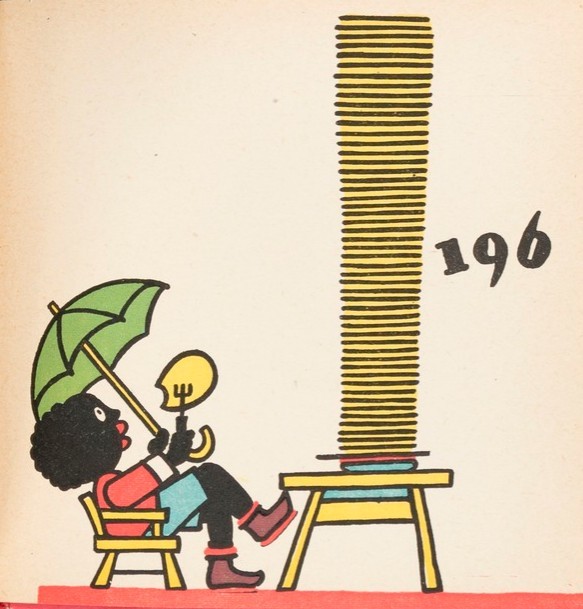At first glance, the story of Little Black Sambo by Helen Bannerman has a seemingly delightful ending. On the last few pages, Little Black Sambo devours 196 pancakes topped with butter that is magically made from tigers. While comical, this image displayed on the page above is highly problematic and should not be taken lightly. In her book Racial Indigestion, Kayla Wazana Tompkins argues that “the black mouth is a site of political intensity itself” (9). Tompkins also points to the long history of the consumption of black bodies when she writes that “the black body as an edible object is a strong and consistent trope (…) and it is an image that carries the weight of many centuries of forced labor (…) and of ongoing political struggle” (8). In the story, Sambo’s character represents the “pickaninny” troupe, which is often depicted as a young black boy who is a source of food for others. This idea of the politicization of the black mouth is evident in Sambo’s over exaggerated lips and the way in which he overindulges in the enormous stack of pancakes. Sambo’s gluttony also speaks to Tompkin’s idea of the black body as an edible object. In the image above it appears as if Sambo is being fattened for slaughter.
Though this scene can be read as Sambo preparing for his own slaughter, it can also be read as Sambo re-claiming possession of his own body. Earlier in the story, Sambo narrowly escapes being eaten by tigers. By eating the pancakes with the butter made from these tigers, Sambo chooses the role of consumer, rather than the role of the food being consumed, and he effectively reclaims possession of his own body. Perhaps Sambo’s exaggerated grin represents the pleasure of eating the tigers who would have eaten him if given the chance.
Tompkins, Kayla Wazana. Racial Indigestion: Eating Bodies in the Nineteenth Century. New York: New York UP, 2012. Print.
